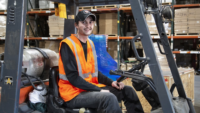Attempting to make this world a healthier and safer place is a lot like finding a giant gaping hole in the bottom of your boat, then attempting to dump the water out with your cupped hands. You may not have noticed the leak early on or figured it was just a little bit of water and ignored it. Regardless, now the ship is sinking — and if you don’t do anything about it, you’ll be swimming with the fishes.
This is a silly metaphor, sure, but it accurately conveys the feeling of urgency many of us have when reflecting on how long we, as a society, have allowed things like pollution to get to such dire levels. And now, with the problem getting worse, it has increased to the point that we’re in panic mode. We now know it’s best to take care of this trouble now rather than put it off.
One arena where people are still neglecting environmental concerns is within workplaces. There are different kinds of pollution — water, land, and air, for example — and it’s time that people on this planet start leveraging green technology and treating them as real issues. But those types of pollution often come from the work we do, and the environment itself is dangerous to workers.
Even with so much awareness about these issues, employers still put themselves at risk every day. We have things to address, and we need to do it fast. The world (and our workforce) depends on it. Let’s discuss the environmental and health impacts of contamination in the workplace today.
The everyday contaminants we still haven’t taken care of
Two of the oddest yet easily understood cases of workplace contaminants come from the buildings people do their jobs in, as well as chemicals used during work duties. In terms of the former, no concern outweighs the risks and prevalence of asbestos exposure.
We’ve known for quite some time now that asbestos — commonly used in construction and insulation — is related to mesothelioma, but some workplaces have neglected its effects or simply deemed them unimportant. Of course, employers may not have put the asbestos there themselves, but they can be held liable for failing to remove it. It’s an invisible killer, and it has affected millions of people across the U.S.
Further, asbestos is extremely resilient, and it can have a negative impact on the environment for many years after it is discarded. When asbestos is improperly disposed of, it can also affect the health of others who unknowingly encounter it, as well as wildlife.
In addition to dangerous building materials, some chemicals used in workplaces can harm employees. For example, there are car wash solutions that are extremely harmful when they make contact with skin — something that without a doubt will happen to people who work at car wash facilities.
These substances can have negative impacts on the environment. These are only two examples of the many building materials and chemicals used in workplaces that can affect us and the planet. Employers, managers, and higher-ups need to be aware of what they’re exposing their workers to, and they need to make adjustments now before it’s too late.
Double agents
You could define a “double agent” in a workplace contamination case as something that is environmentally helpful and harmful at the same time. Think about anti-corrosion coating in factory machines — turns out, this sort of thing has a time limit, and corrosion will eventually happen anyway. When employers don’t replace or take care of it, the food being processed still gets contaminated, and anyone working with it faces some contamination threats as well. It’s easy for something to be an alternative to a negative contaminant but have dangerous byproducts itself.
Other examples of double agents include:
- Any machines that produce smoke, even if not by gas power
- “Natural” cleaners
- Anything machinery painted may have toxic paint
- Any machinery with plastic parts
Turning the ship around
We need to swiftly and uncompromisingly take on the problems affecting our world, and we need to do it within the workplace. We need to take a cue from those who are taking some of the most contaminated and dangerous sites across America and converting them to use renewable energy. We need to change our ways of doing business.
Just ask yourself: Do the products we make or the resources we use contain harmful chemicals that are dangerous to our workers and consumers? Is our work environment full of these chemicals, and is there a way to remove them?
When you choose to address such concerns, address them fully. Do not use half-hearted solutions that leave other problems to be reckoned with later.
To turn the ship around, we have to identify double agents, and we have to stop neglecting the everyday contaminants we’ve ignored for years. The fact is, business owners have kept toxicity in their work environment knowingly. It’s an easy thing to do, but it’s costing lives and our planet, and we can no longer justify it if we care about the people around us.



